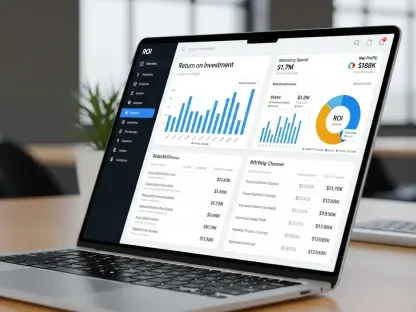Setting the Stage for a Beverage Industry Powerhouse
In a fiercely competitive U.S. beverage market, Anheuser-Busch InBev (AB InBev) stands out with a staggering $300 million investment in its domestic facilities, signaling an aggressive push to dominate through its megabrands. This bold move comes at a time when consumer preferences are shifting rapidly toward premium and health-conscious options, challenging traditional beer giants to adapt or risk losing ground. With megabrands like Michelob Ultra and Busch Light leading volume gains, AB InBev’s strategy raises a critical question: how is the company leveraging its portfolio and infrastructure to capture market share in such a dynamic landscape? This market analysis dives into the trends, data, and projections that define AB InBev’s growth trajectory, exploring the interplay of innovation, regional expansion, and digital transformation in securing its position as a leader in the American beverage sector.
Dissecting Market Trends and Strategic Moves
Megabrands as Market Share Catalysts
At the core of AB InBev’s U.S. strategy lies the undeniable strength of its megabrands, which serve as powerful engines for revenue and market penetration. Michelob Ultra and Busch Light have emerged as the top two volume share gainers in the U.S. beer industry, with Michelob Ultra driving both financial performance and premiumization trends. Despite a strong national presence, regional disparities persist—market share remains lower in areas like the West and Northeast, highlighting untapped potential for growth. Globally, AB InBev’s portfolio of 50 megabrands has delivered a 5.6% revenue increase, while Corona has fueled a 7.7% revenue uptick outside Mexico. This data underscores the importance of focused marketing efforts, backed by a hefty $3.6 billion investment in sales and marketing initiatives in the first half of the current year, to amplify brand visibility and capitalize on high-impact opportunities.
Innovation Beyond Traditional Beer Categories
Shifting consumer habits have pushed AB InBev to explore categories beyond conventional beer, targeting new drinking occasions and demographics. The “beyond beer” and non-alcoholic segments are witnessing explosive growth, with products like Busch Light Apple—a seasonal offering with a purchase rate six times the industry average among 21- to 24-year-olds—and Michelob Ultra Zero, a low-calorie non-alcoholic option, contributing to a 33% revenue surge in the non-alcoholic portfolio. These innovations reflect a keen understanding of emerging preferences, particularly for health-conscious and younger consumers. However, scaling such products demands agile production systems and risks oversaturation in niche markets. AB InBev’s ability to balance experimentation with core brand strength positions it to capture diverse consumer segments while navigating potential pitfalls in product rollout.
Operational Upgrades and Regional Expansion Dynamics
Infrastructure investments play a pivotal role in supporting AB InBev’s ambitious growth plans, ensuring operational readiness to meet rising demand. A $300 million commitment to modernize U.S. facilities, including key locations like St. Louis and Columbus, enhances production capacity for megabrands and innovative offerings. This move addresses regional nuances, as weaker market penetration in certain states calls for tailored distribution and localized marketing strategies. Industry insights suggest that such upgrades, coupled with workforce training, enable flexibility in a volatile market where consumer trends can shift abruptly. By aligning physical capabilities with strategic priorities, AB InBev mitigates supply chain bottlenecks and prepares for sustained expansion across varied geographic landscapes.
Digital Transformation and Consumer Engagement
Digital tools are reshaping how AB InBev connects with consumers and optimizes operations, marking a significant trend in its market approach. Direct-to-consumer platforms have seen a 6% revenue growth, while the BEES marketplace has recorded a remarkable 63% year-over-year increase in gross merchandise value. These advancements streamline distribution and provide valuable consumer insights, enabling more targeted campaigns for megabrands. As younger, tech-savvy demographics become a larger share of the market, digital integration offers a competitive edge, allowing real-time adjustments to marketing and inventory. This trend points to a broader industry shift toward data-driven decision-making, positioning AB InBev to maintain relevance in an increasingly connected beverage ecosystem.
Future Projections: Premiumization and Regulatory Impacts
Looking ahead, AB InBev’s U.S. market performance is likely to be shaped by ongoing premiumization and evolving regulatory frameworks. Consumer demand for high-end and health-focused beverages suggests continued growth in categories like non-alcoholic and premium beers, with projections indicating steady volume increases for brands like Michelob Ultra over the next few years, from 2025 to 2027. However, potential changes in alcohol taxation or advertising restrictions could introduce headwinds, requiring adaptive strategies to maintain profitability. With a diversified portfolio and strong geographic footprint in the Americas, AB InBev appears well-equipped to weather such challenges. Analysts anticipate that sustained investment in consumer insights and operational efficiency will further solidify its market dominance, especially as competitors scramble to match its pace in innovation.
Reflecting on Strategic Implications and Next Steps
Looking back, AB InBev’s calculated approach to U.S. market growth through megabrands, operational enhancements, and digital innovation delivered a robust framework for success. The focus on high-performing brands like Michelob Ultra, paired with bold moves into non-alcoholic categories, addressed shifting consumer needs effectively. For industry stakeholders, the takeaway is clear: prioritizing scalable, high-impact products while investing in flexible infrastructure proves essential for staying competitive. Moving forward, beverage companies should consider deepening regional market analysis to uncover growth pockets while embracing digital platforms to enhance consumer reach. Additionally, preparing contingency plans for regulatory shifts could safeguard long-term stability. AB InBev’s journey offers a compelling model, suggesting that blending tradition with adaptability is the key to thriving in a fast-evolving market.









